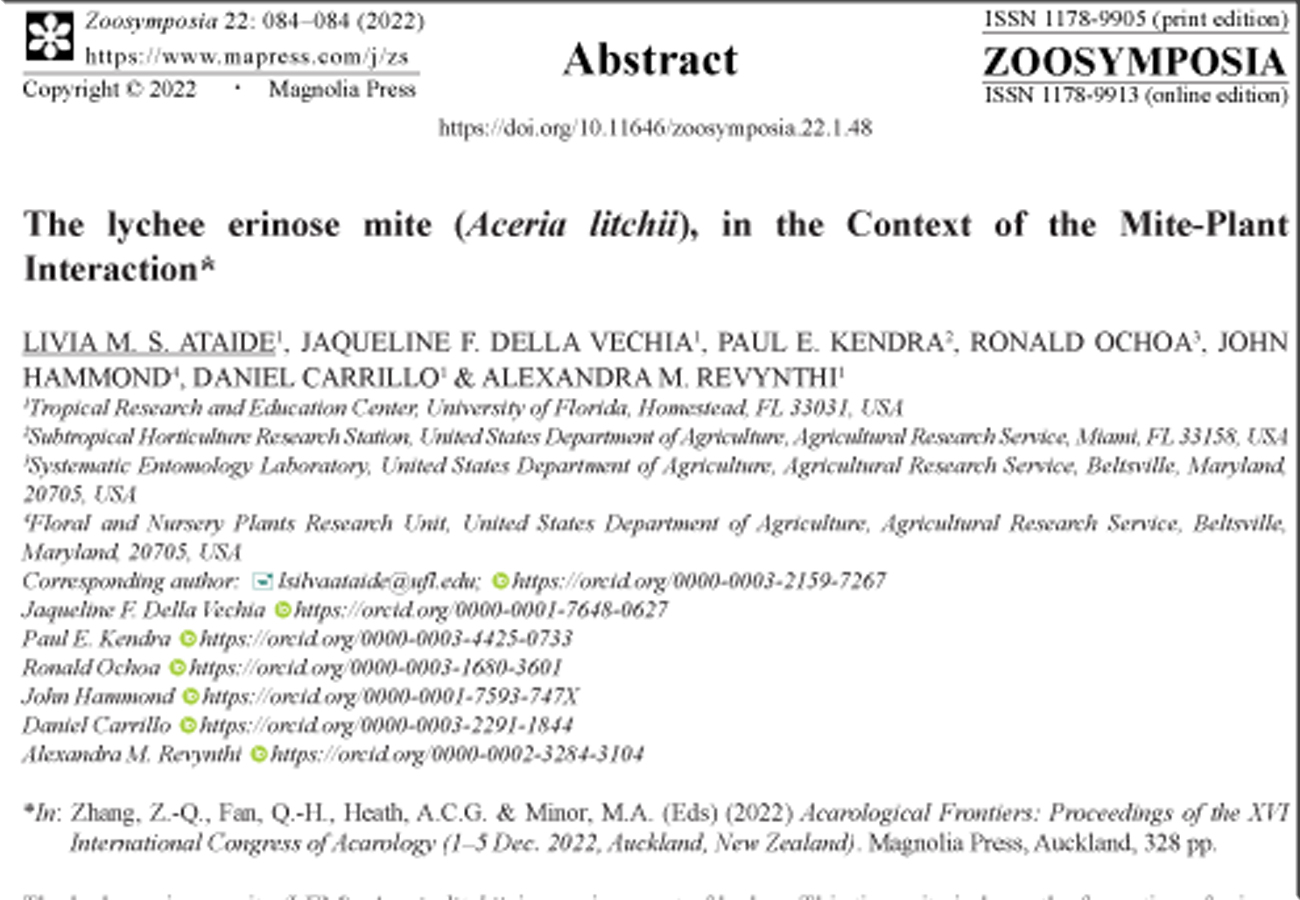Abstract
The lychee erinose mite (LEM), Aceria litchii, is a serious pest of lychee. This tiny mite induces the formation of erinea, which are open galls with hypertrophic trichomes. Erinea can form on leaves, flowers, fruit, and other plant structures, hampering plant growth and yield. Four distinct types of erinea can be observed: light white (stage 01), white (stage 02), amber (stage 03), and dark erinea (stage 04). To date, it is unknown how and why A. litchii induces the formation of erinea on lychee plants.
References
-


